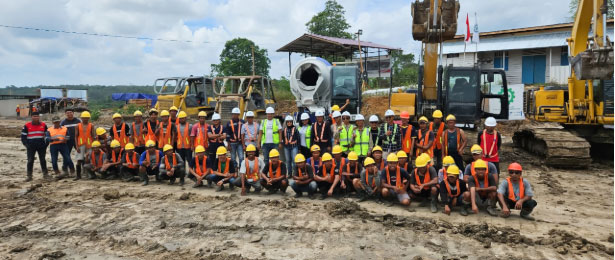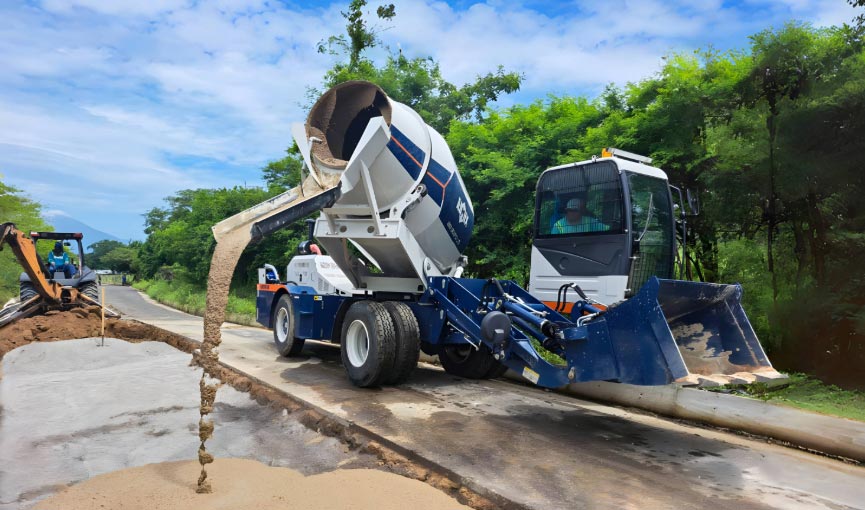Self-loading concrete mixer trucks are revolutionizing the construction industry with their versatility and efficiency. This guide explores their cost-effectiveness, safety features, operating mechanisms, and weighing systems, helping you make an informed decision for your business.
Cost-Effectiveness of Self-Loading Concrete Mixer Trucks
Self-loading concrete mixer trucks are particularly advantageous for specific construction sites due to their ability to operate efficiently in various conditions. The self loading mixer truck can be driven directly to the worksite, allowing for precise placement, even on multi-story buildings. The control systems integrated into the trucks help operators manage unloading procedures and adjust settings effortlessly.
The design of the operating cabin, mounted on the same platform as the mixer, enhances visibility and control during operations. The drums that hold the concrete are typically made from durable steel; however, newer models are increasingly utilizing fiberglass, which can offer a lighter weight without compromising strength.

Types of Self-Loading Mixer Trucks
There are two primary types of self-loading mixer trucks: periodic and continuous models.
- Periodic Mixers: These trucks perform feeding procedures at set intervals, allowing for more precise measurements of the ingredients. This feature ensures a consistent and high-quality mix.
- Continuous Mixers: As the name suggests, continuous mixers constantly stir the ingredients within the drum, enabling uninterrupted delivery of concrete. This is particularly beneficial for large projects where time is critical.
Both types come equipped with robust engines designed to navigate challenging terrains, making them ideal for construction sites that may present logistical challenges. Choose a suitable self concrete mixer from AIMIX Group.
Ensuring Safety in Operations
Safety is a top priority when operating self-loading concrete mixer trucks. Theoretical calculations can help establish safe turning speeds for these vehicles, minimizing the risk of accidents. Advanced computer simulations can analyze stability and potential rollover risks, providing valuable data for operators to consider.
Research conducted using OSHA Log 200 forms has revealed that safety risks primarily stem from the operator’s job functions. By understanding these risks, companies can implement better training and safety protocols to protect their drivers.
Injury Statistics and Prevention
While the data obtained is not exhaustive of the entire ready-mixed concrete industry, it highlights the importance of safety measures. By focusing on driver training and adhering to safety guidelines, construction companies can mitigate the risks associated with self-loading concrete mixer trucks.

Operating Panel: A Closer Look
The self-loading concrete mixer truck operates as a self-contained unit, allowing for concrete mixing without the operator needing to be inside the vehicle. The operational process begins with loading the necessary supplies. The operator starts the diesel engine and engages the gear lever. A bucket loader at the front of the truck pushes raw materials into the mixing drum, powered by a hydraulic pump.
Functional Systems
The systems within a self-loading concrete mixer truck work in harmony to ensure smooth self loading concrete mixer operations. These include:
- Loading Mechanism: Efficiently gathers raw materials.
- Mixing System: Ensures a uniform and consistent concrete mix.
- Control Panel: Provides operators with real-time data on the mixing process.
This combination of systems enhances both the efficiency and effectiveness of concrete delivery, making self-loading mixer trucks a practical choice for various construction projects.
Weighing Mechanism: Precision in Mixing
One of the standout features of self-loading concrete mixer trucks is their electronic weighing system. When the truck elevates raw materials, it activates this system, enabling precise measurement of ingredients.
Dual Measuring Systems
The self-loading mixer truck is equipped with two distinct measuring systems:
- Aggregate Weighing System: Measures the weight of the raw materials, ensuring accurate proportions are maintained for the concrete mix.
- Water Measuring System: Monitors the amount of water used, displayed on the operational cab’s panel. This feature helps the driver determine the correct water-to-cement ratio for an optimal mix.
By providing immediate feedback on loading conditions, these systems enhance the overall quality of the concrete produced.
Pricing Considerations for Self-Loading Concrete Mixer Trucks
The price of self-loading concrete mixer trucks can vary significantly based on the manufacturer and model. Factors to consider include:
- Output and Quality: Higher output models often come at a premium, but they can deliver significant value in terms of efficiency.
- After-Sales Service: Some manufacturers include after-sales service in their concrete mixer price in Kenya, which can be a crucial aspect of long-term ownership.
- Brand Reputation: While well-known brands may charge more due to their established reputation, there are often affordable alternatives that offer comparable quality.
When evaluating your options, consider the balance between cost and quality. Often, you can find high-quality self-loading mixer trucks at competitive prices, making it essential to research and compare your choices carefully.
Conclusion
Self-loading concrete mixer trucks represent a significant advancement in construction technology, combining efficiency, safety, and cost-effectiveness. By understanding the various features and operational mechanisms of these trucks, you can make an informed decision that best suits your business needs. Whether you’re managing a small project or a large construction site, a self-loading concrete mixer truck could be the ideal solution to enhance your operations.
